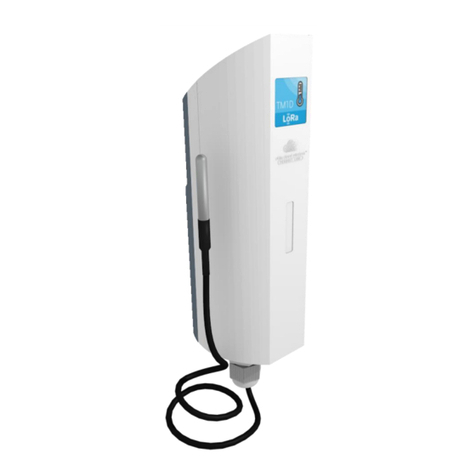1
ATIM_ACW-TM2D-HP_UG_EN_V1.2
TABLE OF CONTENTS
Document version history........................................................................................................................3
Disclaimer.................................................................................................................................................3
Trademarks and copyright .......................................................................................................................3
Declaration of compliance.......................................................................................................................4
Environmental recommendations ...........................................................................................................4
a. Explosive atmosphere.................................................................................................................................4
b. Environment ...............................................................................................................................................4
c. Radio...........................................................................................................................................................5
Technical specifications ...........................................................................................................................6
Housing ....................................................................................................................................................7
a. Space requirements....................................................................................................................................7
b. Opening the ACW housing..........................................................................................................................8
c. Mounting to a support................................................................................................................................8
d. Identification...............................................................................................................................................9
e. Placement and installation .......................................................................................................................11
Operation...............................................................................................................................................12
a. Periodic mode (shown as ‘Periodical’ in the configuration tool)..............................................................12
b. Energy Saver mode ...................................................................................................................................13
ACW configuration tool..........................................................................................................................14
a. What version of the ACW configuration tool should you use? ................................................................14
b. Configuring the LoRaWAN network pairing mode: ..................................................................................15
c. Configuring the Energy Saver mode .........................................................................................................16
d. Configuring periodic mode .......................................................................................................................17
e. Factory settings.........................................................................................................................................17
Uplink frame formats.............................................................................................................................18
a. Sigfox and LoRaWAN ................................................................................................................................18
b. Example ....................................................................................................................................................18
c. Startup sequence......................................................................................................................................19
Downlink ................................................................................................................................................20
a. Keep-alive frame frequency......................................................................................................................20
b. Mode of operation....................................................................................................................................20
c. Lower threshold........................................................................................................................................20
d. Upper threshold........................................................................................................................................20
e. Temperature sampling period ..................................................................................................................21
f. Temperature offset probe 1 .....................................................................................................................21
g. Pairing with LoRaWAN network ...............................................................................................................21
h. Delta for comfort zone probe 1 ................................................................................................................21




























